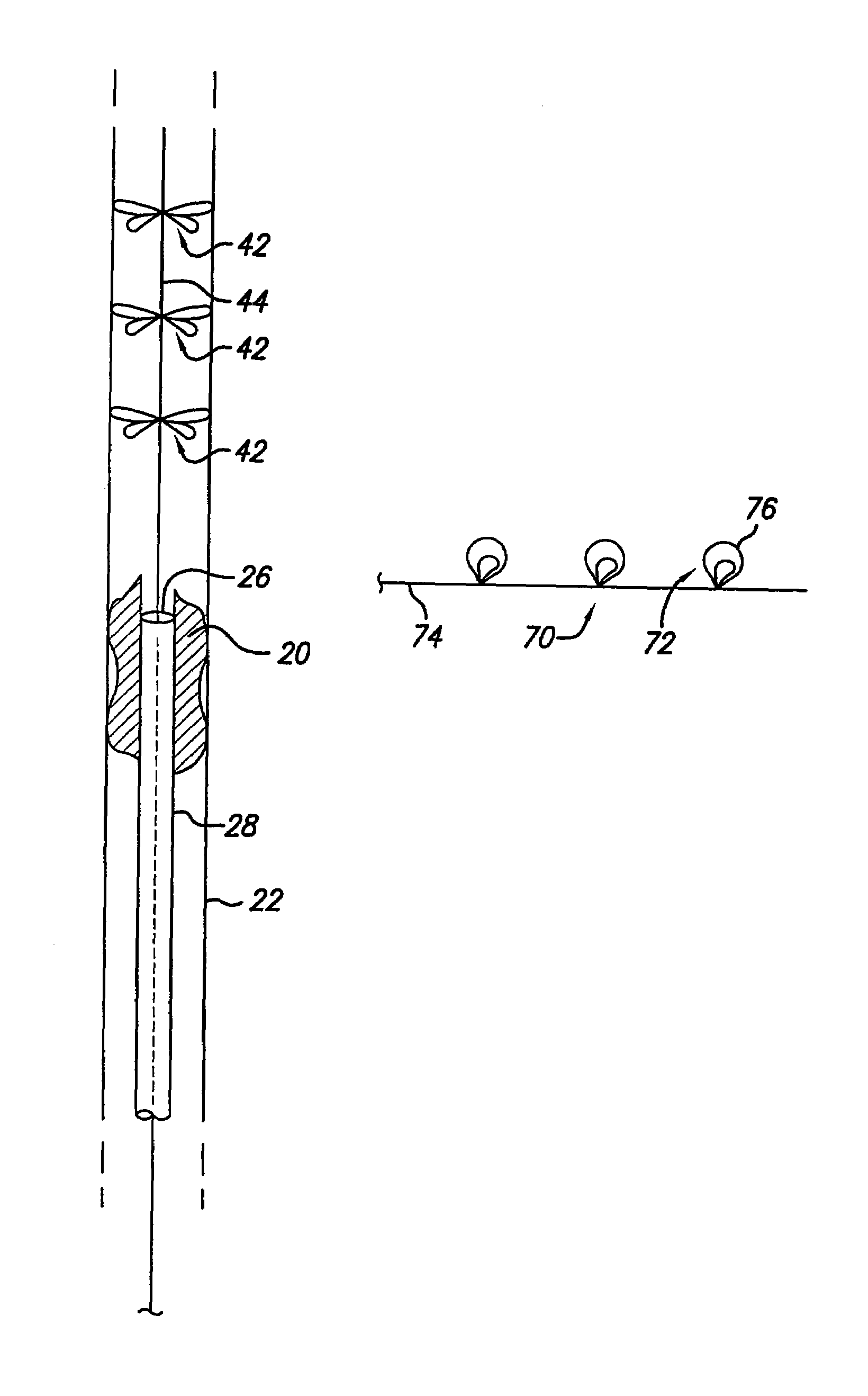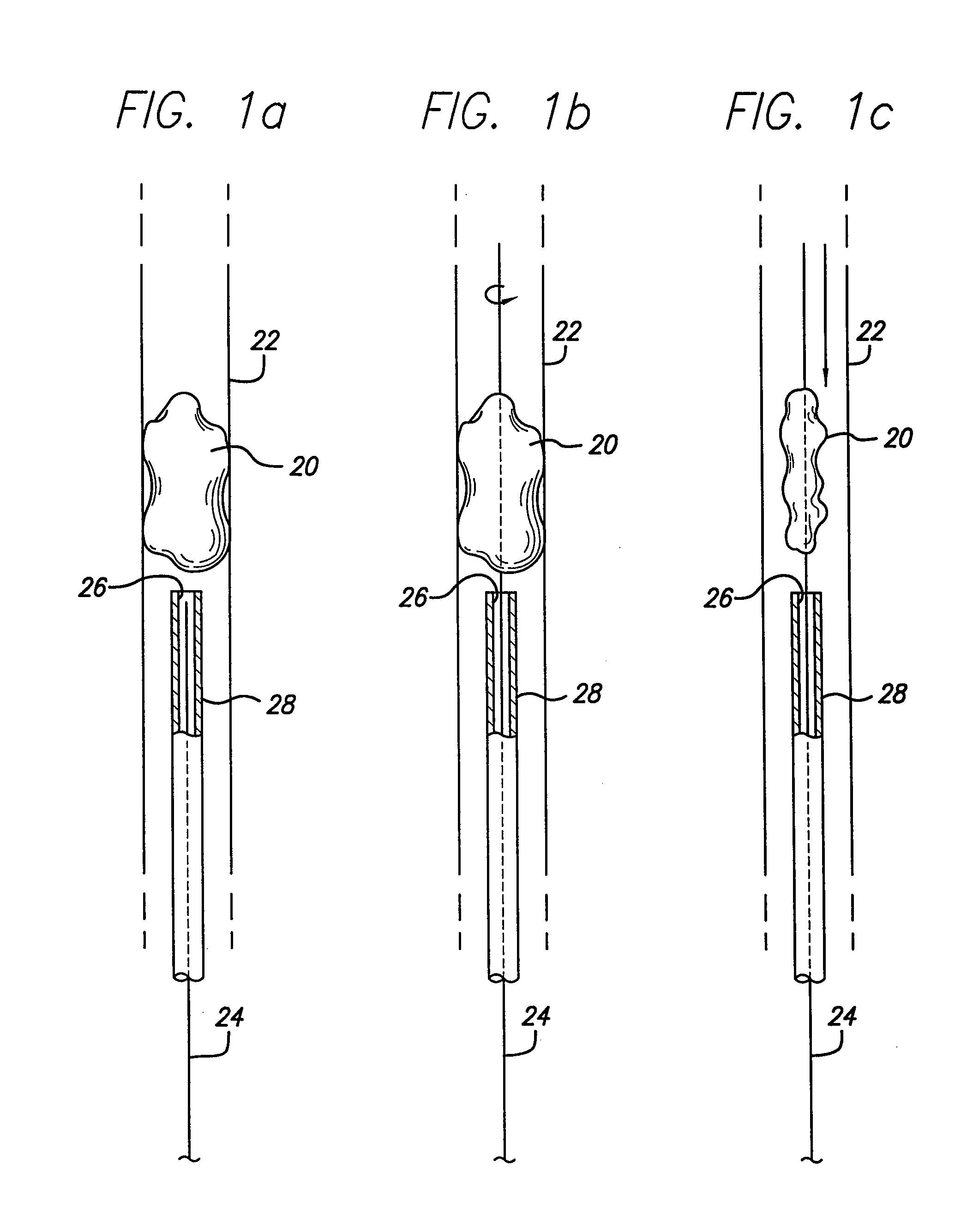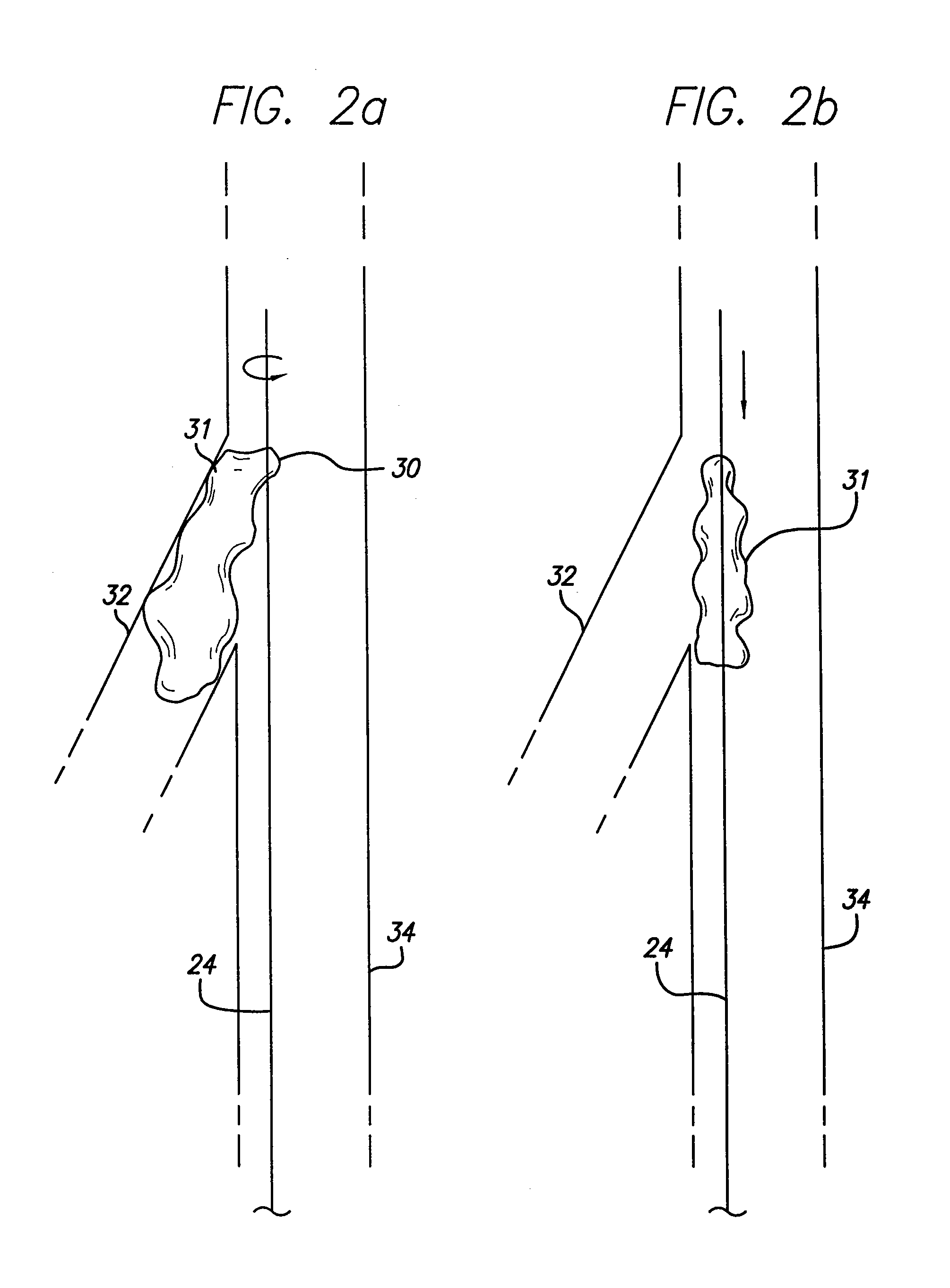Filter/emboli extractor for use in variable sized blood vessels
a filter and extractor technology, applied in the field of medical devices, can solve the problems of myocardial infarction, stroke or even death, morbidity and mortality, tissue ischemia (lack of oxygen and nutrients),
- Summary
- Abstract
- Description
- Claims
- Application Information
AI Technical Summary
Benefits of technology
Problems solved by technology
Method used
Image
Examples
second embodiment
[0049]A second preferred embodiment of the present invention is shown in FIGS. 3a–d. The second embodiment is a staged filter / emboli extractor 40 that includes a plurality of spaced-apart radially extending structures 42 configured on a mandrel 44. The radially extending structure 42 each embody a plurality of loops or petals 46 arranged in an angular radial array about the circumference of the mandrel 44. As shown in the break-out illustration included in FIG. 3a which depicts an end view of one radially extending structure 42, it is contemplated that each loop or petal 46 be configured to overlay at least a portion of the next adjacent petal in an over-under pattern such that each loop / petal 46 supports another loop / petal 46. It is also contemplated that each loop / petal can overlay / underlay two or more petals in a supporting fashion.
[0050]The number of petals or loops 46 of a radially extending structure 42 can range from 3–8 or more depending on the size of the petal or loop. The...
fourth embodiment
[0067]As shown in FIG. 7, the present invention embodies a knitted or mesh, hollow basket-like extractor 80 which includes a basket 82 attached to a mandrel 84. The mandrel 84 can be a solid or tubular structure. The basket 82 includes a mesh or knitted portion 86 connected by conventional means such as welding via a plurality of proximally extending arms 88 to the distal end of the mandrel 84. The knitted or mesh portion 86 may form a cone-like configuration with its most distal end 89 defining the apex of the cone. It is to be recognized, however, that other basket configurations may also be employed. The basket-like extractor 80 is characterized by providing structure which may be particularly useful in collecting matter in its hollow interior as blood flows therethrough.
fifth embodiment
[0068]As shown in FIG. 8, a fifth embodiment in the present invention includes a hollow knitted or mesh extractor 90 attached to a distal end of a solid or tubular mandrel 92. In this embodiment, the knitted or mesh portion has a cone-like proximal portion 94 that is welded or otherwise affixed to the distal end of the mandrel 92 as well as a generally cylindrical distal portion 96 which extends integrally from the proximal portion 94. The distal most end 98 of the knitted or mesh structure terminates at a generally right angle to a longitudinal axis of the knitted or mesh portion and further defines an opening to the hollow interior of the device. This device may provide a relatively larger cross-section for blood to flow through its distal end while the device continues to trap undesirable material in a blood vessel or compress the same against the vessel wall.
PUM
 Login to View More
Login to View More Abstract
Description
Claims
Application Information
 Login to View More
Login to View More - R&D
- Intellectual Property
- Life Sciences
- Materials
- Tech Scout
- Unparalleled Data Quality
- Higher Quality Content
- 60% Fewer Hallucinations
Browse by: Latest US Patents, China's latest patents, Technical Efficacy Thesaurus, Application Domain, Technology Topic, Popular Technical Reports.
© 2025 PatSnap. All rights reserved.Legal|Privacy policy|Modern Slavery Act Transparency Statement|Sitemap|About US| Contact US: help@patsnap.com



